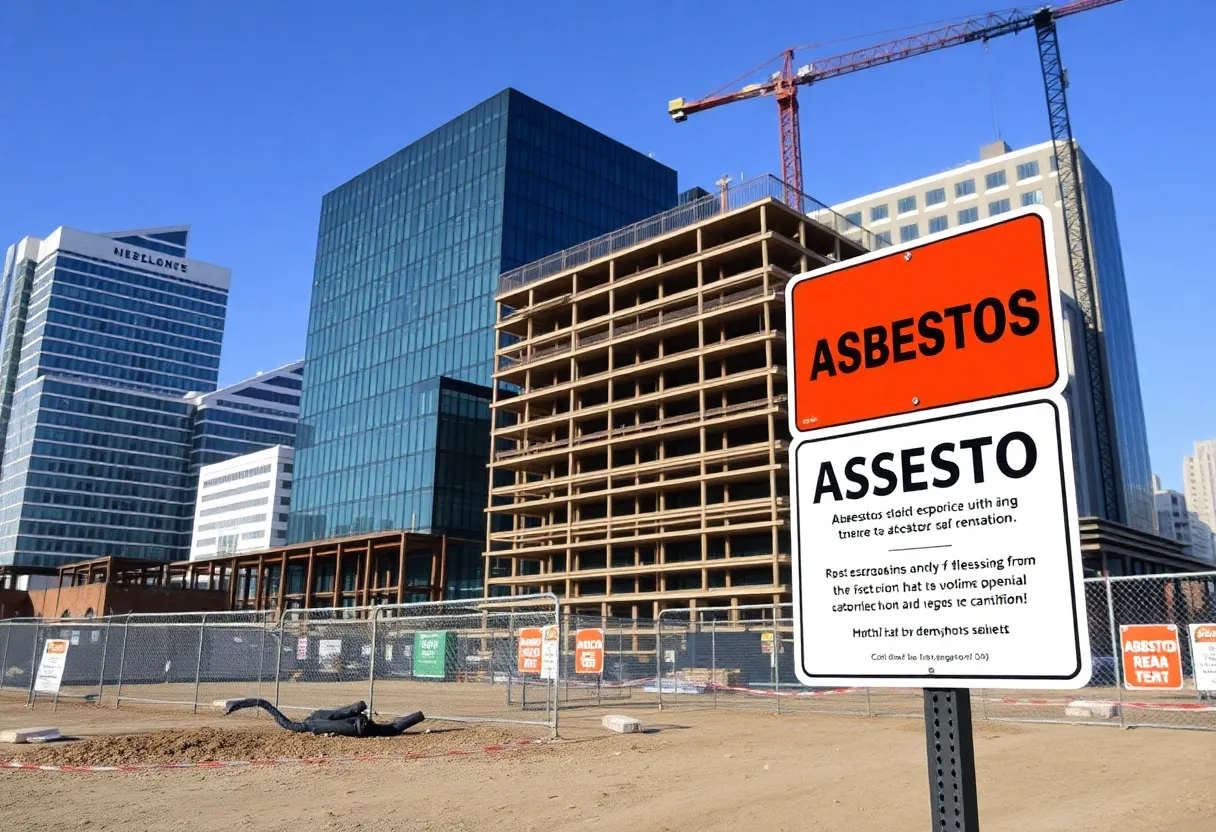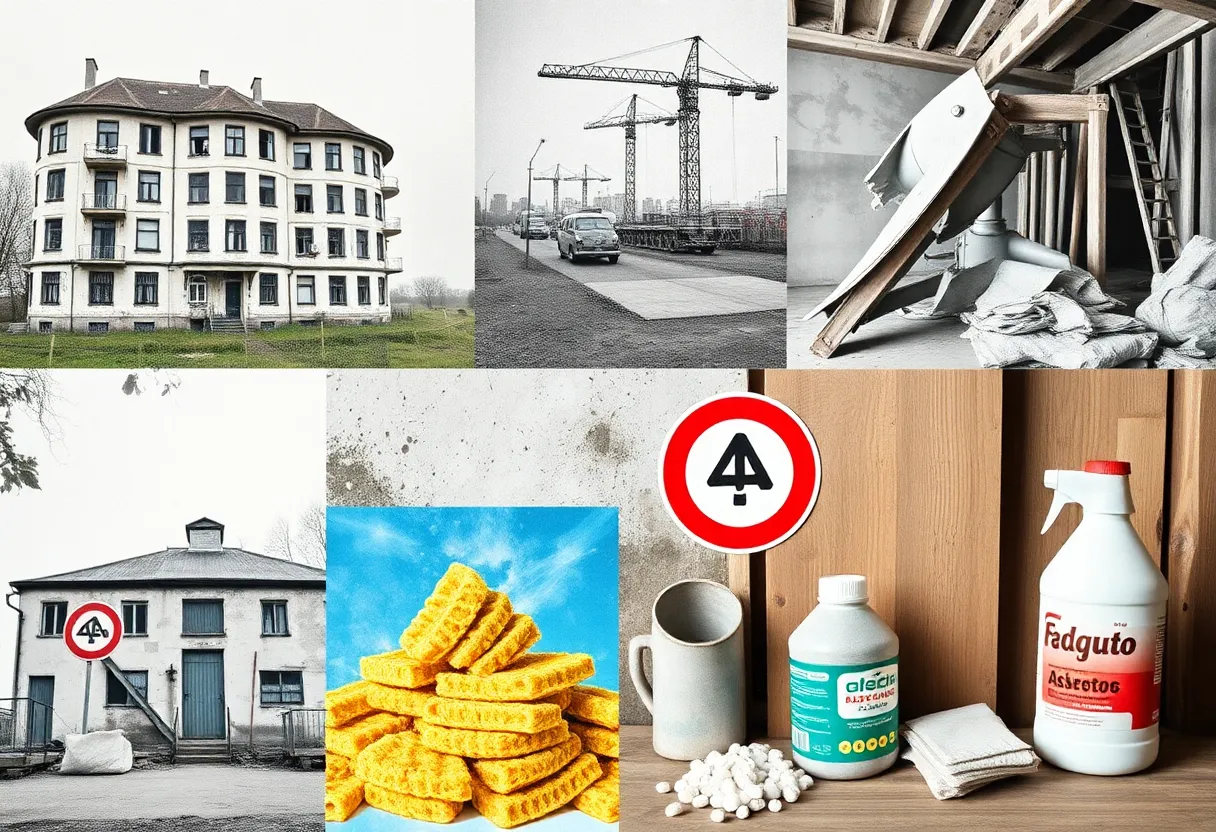News Summary
French construction giant Altrad faces backlash after offering a significantly low compensation of £3 million to asbestos victims, falling short of the requested £10 million. The company’s controversial tactics, including attempting to limit advocacy for victims, have drawn criticism from support groups. As asbestos exposure continues to pose health risks, advocates stress that responsibility lies with corporations profiting from harmful products.
The Asbestos Dilemma: Altrad’s Controversial Compensation Offer Sparks Outrage
In the world of construction and asbestos exposure, a new dust storm is brewing. French-owned construction behemoth Altrad is feeling the heat after its controversial acquisition of British asbestos board manufacturer Cape back in 2017. While investors might see potential for profit, victims of asbestos exposure are being urged to remain vigilant against what many are calling ‘bullying tactics’ from the corporate giant.
Compensation Controversy
Reports have surfaced indicating that Altrad offered a meager compensation amount to the Asbestos Victims Support Groups Forum UK (AVSGF), falling woefully short of the forum’s request for £10 million. Instead, Altrad’s offer settled at a paltry £3 million, which would be doled out in increments of £300,000 over the next decade. Such an offer has raised eyebrows, as it reportedly includes conditions requiring the AVSGF to stop lobbying for asbestos victims and dissuade others from seeking reparations.
The Heart of the Matter
Legal documents have surfaced, revealing that Cape, the firm which Altrad acquired, was aware of the life-threatening risks associated with its products. For decades, Cape downplayed the health hazards of asbestos exposure to maintain profits, despite knowing the true dangers it posed to users. This notorious practice exemplifies a culture of profit over people, a trend that is far too common in industries where asbestos has been utilized.
NHS and Taxpayers Left in the Lurch
Advocates representing the victims have voiced their frustration, insisting that the burden of caring for those affected by asbestos diseases should not fall on the NHS or taxpayers. According to legal representatives, the weight of responsibility lies squarely with firms like Cape and Altrad, which profited from the very products that caused irreversible harm.
Asbestos: A Historical Context
Asbestos usage has a long and checkered past in the UK, prevalent in public buildings, schools, and even churches since the 1960s. Its application in insulation and fireproof materials left far-reaching effects, with a latency period of 10 to 40 years for developing asbestos-related diseases, often complicating legal claims. The typical government approach has been to leave undamaged asbestos materials in place unless they show visible signs of deterioration, a policy that has increasingly drawn scrutiny as awareness surrounding asbestos-related health issues grows.
The Greater Trend in Asbestos Litigation
The emergence of silicosis compensation claims is indicative of a broader trend, as public awareness regarding asbestos-related health crises continues to rise. Particularly significant is the legal action being taken by women in the UK against Johnson & Johnson over alleged connections between talc and cancers like ovarian cancer. This potential group action, which involves 1,900 claimants, could evolve into one of the largest pharmaceutical product lawsuits in English and Welsh legal history.
Talcum Powder: A Hidden Menace
Talcum powder, once a staple in many homes, is now under intense scrutiny for its suspected contamination with asbestos, a known carcinogen. Even though talc is believed to have been historically tainted with asbestos, J&J continues to deny the allegations. The situation highlights the troubling fact that the testing methods for asbestos in talc products are inconsistent, leading to misleading claims of “no detectable asbestos” despite potential contamination risks.
A Call for Change
The Legal landscape surrounding asbestos and related health issues continues to evolve, with a notable shift towards including international plaintiffs. UK residents are increasingly filing claims based on exposure to products manufactured abroad, revealing a multifaceted approach to addressing these grave health risks. In response, there is growing public demand for safer alternatives to talc in cosmetics, prompting calls for innovation in beauty and personal care products.
Moving Forward
As the dust settles on the Altrad controversy, support groups and advocates continue to rally for justice for the victims of asbestos exposure. Altrad insists that it has never mined or manufactured asbestos products and proclaims its commitment to leading in asbestos removal in hazardous environments. However, the pressing question remains: How will justice be served for those who have suffered due to corporate negligence?
With the legal battles not likely to end anytime soon, victims and their families hope that the push for accountability will not be buried under the rubble of corporate interests.
Deeper Dive: News & Info About This Topic
HERE Resources
Velan Inc. Completes Significant Asbestos Liability Divestiture
Community Unites for Local Business Owner Battling Terminal Mesothelioma
Talcum Powder Litigation Update: The Battle Continues in 2025
Revolutionary Therapy for Pleural Mesothelioma: TTFields Shows Promise
Temescal Gateway Park Closed Due to Asbestos Storage
Massive Barn Fire in Chudleigh: A Blaze to Remember
Global Asbestos Awareness Week: Honoring the Legacy of Howard Willems
Local Roofing Contractor Faces Consequences for Asbestos Mishandling
A Construction Giant’s Controversial Ties to Asbestos and Cancer Research
Desperate Calls for Asbestos Research Funding Amid Rising Mesothelioma Cases



















